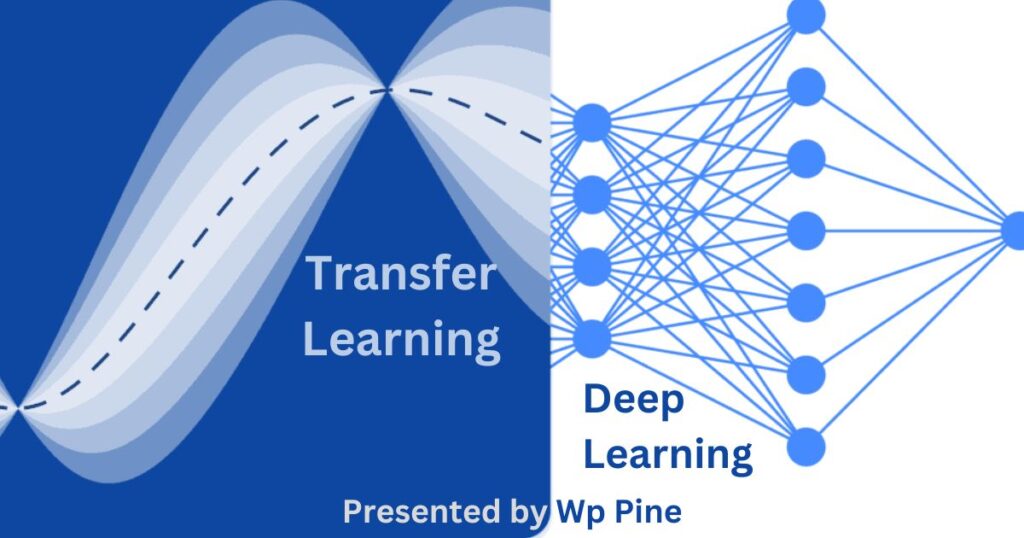This is one of the powerful deep learning techniques where the models initially trained in one task are adapted and reused on other related tasks with minimal additional training. It relies on pre-existing knowledge and, therefore significantly reduces the time and resources necessary for the extensive training of new models. The paper discusses key principles and techniques behind transfer learning and its advantages in efficiency and performance. It also represents a whole spectrum of applications, from computer vision and natural language processing to healthcare and autonomous systems, demonstrating its capacity to accelerate advancement in AI and minimize the requirement of large datasets in every new task.
Understanding Transfer Learning
The knowledge that has been acquired in solving one problem is transferred to improve performance on a different but related problem. In deep learning, this is done by taking a pre-trained model or parts of its architecture on the source problem as a starting point for training on the target problem. Because this approach dramatically decreases the demand for extensive training data and computational resources for the target task, it allows for much faster development and subsequent deployment of models across different domains. In addition, by using pre-learned features, transfer learning improves the model’s ability to generalize and perform well on new, though related tasks.
Key Concepts
- Pre-trained Models: A model trained on very large datasets for generic tasks such as image classification, natural language processing, or speech recognition.
- Fine-tuning: Re-train the pre-trained models on new data or adjust their parameters to suit a specific task.
- Feature Extraction: Processing new data using pre-trained models in extracting meaningful features without training the model again as a whole.
Techniques of Transfer Learning
Feature Extraction
- Freezing Layers: Keep the weights of early layers fixed while only fine-tuning the deeper layers for the new task.
- Extracting Features: Use activations of pre-trained models as input features for a new classifier.
Fine-tuning
- Re-training Top Layers: Replace the final layers of a pre-trained model with new layers suitable for the new task, then fine-tune the entire model on new data.
- Adjusting Parameters: Modify learning rates or regularization parameters to adapt the model to the new task.
Benefits of Transfer Learning
Reduced Training Time and Data Requirements
- Transfer learning reduces the amount of labeled data required for training, as pre-trained models have already learned generic features from large datasets.
Improved Performance
- Pre-trained models often give better results on new tasks and converge faster, especially in the case when new tasks have limited data.
Domain Adaptation
- Transfer learning facilitates the adaptation of models to new domains or datasets with different characteristics from the original training data.
Accessible State-of-the-Art Models
- Pre-trained models trained by large organizations or research institutions give access to state-of-the-art architectures and weights, which are very expensive and time-consuming to train from scratch.
Applications of Transfer Learning
Transfer learning finds applications across various domains:
- Computer Vision: Object detection, image segmentation, and facial recognition.
- Natural Language Processing (NLP): sentiment analysis, text classification, and machine translation.
- Audio Processing: Speech recognition, speaker identification, and music classification.
- Healthcare: medical image analysis, disease diagnosis, and patient monitoring.
Practical Considerations
- Choosing Pre-trained Models: Select models trained on tasks similar to the target task to maximize transferability.
- Domain Similarity: Ensure the similarity between the original and target domains to achieve optimal performance.
- Fine-tuning Strategy: Experiment with freezing layers versus fine-tuning the entire model based on the dataset size and complexity.
Future Directions in Transfer Learning
- Multi-task Learning: Simultaneously learn multiple tasks using shared representations.
- Meta-learning: Automatically learn how to transfer knowledge across tasks or domains.
- Privacy-preserving Transfer Learning: Develop techniques to transfer knowledge while preserving data privacy.
Conclusion
Transfer learning is one of the most efficient techniques for facilitating knowledge transfer between tasks and domains from all of the techniques in deep learning. A lot of time can be saved and the ability of the model to approach challenges related to limited data is enhanced since it uses pre-trained models and learned representations to allow the development of a more effective model in less time. Further research in the field of transfer learning will improve its ability to aid in the advancement of AI systems, moving it towards being more adaptable, efficient, and competent in solving real-world problems that are typically complex and fall under numerous applications.
Additional Resources
Dive deeper into Deep Learning, practice with real datasets, and continue expanding your knowledge. Share this guide with others and leave your thoughts or questions in the comments!
For further reading on Deep Learning best practices and tools, consider exploring the following resources:
- Learn more about DL from deeplearning.ai
- Learn the DL step by step from simplilearn.com
- Building Models with PyTorch and Keras by Wppine
- A deep dive into CNN by Wppine
- Top 10 Machine Learning Algorithms by Wppine



